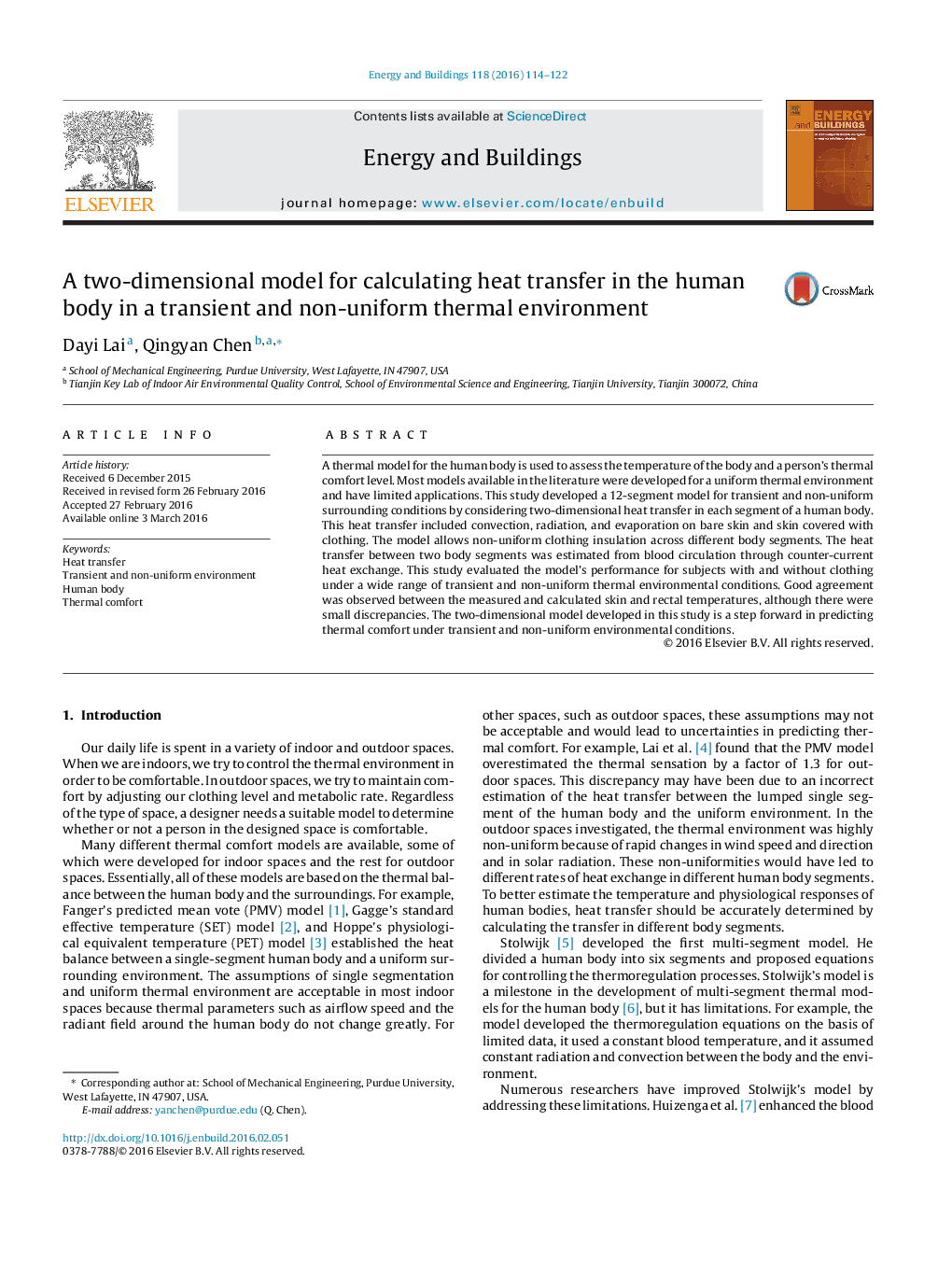| Article ID | Journal | Published Year | Pages | File Type |
|---|---|---|---|---|
| 6730272 | Energy and Buildings | 2016 | 9 Pages |
Abstract
A thermal model for the human body is used to assess the temperature of the body and a person's thermal comfort level. Most models available in the literature were developed for a uniform thermal environment and have limited applications. This study developed a 12-segment model for transient and non-uniform surrounding conditions by considering two-dimensional heat transfer in each segment of a human body. This heat transfer included convection, radiation, and evaporation on bare skin and skin covered with clothing. The model allows non-uniform clothing insulation across different body segments. The heat transfer between two body segments was estimated from blood circulation through counter-current heat exchange. This study evaluated the model's performance for subjects with and without clothing under a wide range of transient and non-uniform thermal environmental conditions. Good agreement was observed between the measured and calculated skin and rectal temperatures, although there were small discrepancies. The two-dimensional model developed in this study is a step forward in predicting thermal comfort under transient and non-uniform environmental conditions.
Related Topics
Physical Sciences and Engineering
Energy
Renewable Energy, Sustainability and the Environment
Authors
Dayi Lai, Qingyan Chen,
